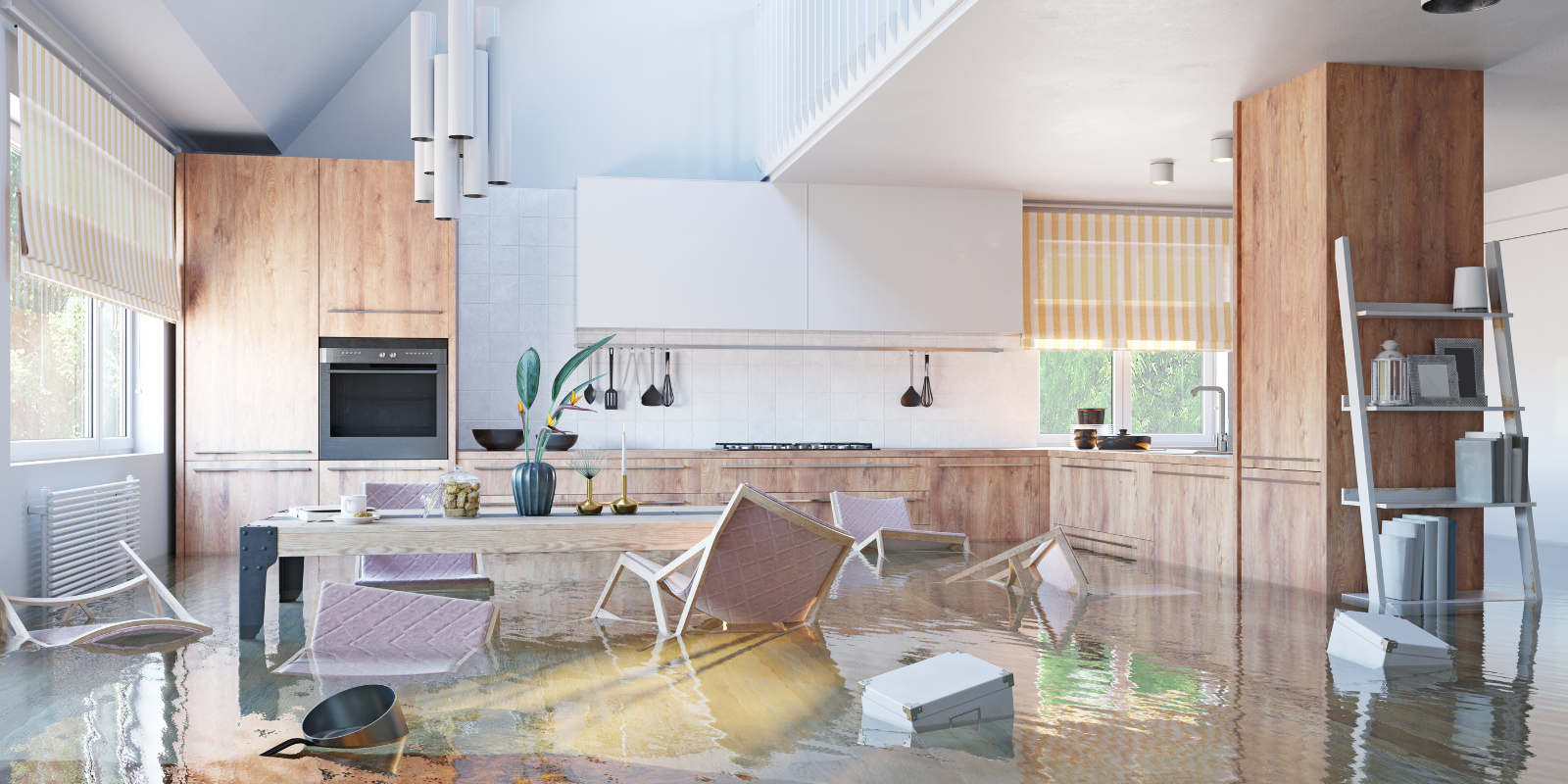
How to clean a flood-damaged home: Must-know 66-step guide
By: 911 Water Damage Experts
If your home is damaged by a flood and want to learn how to clean and restore it back to the way it was, keep reading.
Below we highlight a step-by-step guide on what to do.
Let’s get right into it.
Safety
1. Electrical safety is crucial during floods; check for structural and electrical damage from the outside to decide if it is safe to enter. Check for gas leaks and fire dangers. Make use of battery-operated lighting.
2. Never combine vinegar or ammonia with chlorine bleach.
3. Put on sturdy shoes, rubber gloves, and safety goggles.
4. If there is mould present, put on a respirator that can filter spores.
5. Keep an eye out for snakes, fire ants, or other animals. Ensure that no one is in danger from fresh flood crests, fires, or falling structures. Assume the floodwater and materials that were flooded are polluted.
Flood Insurance Claims
6. Immediately get in touch with your insurance adjuster if you have flood insurance.
7. As soon as you can, start with the cleaning, salvaging, and drying.
8. Never wait for the adjuster. Make an inventory using images. You can carry out all the recommendations on this page before an adjuster shows up.
9. Make sure the house is clean so the adjuster can view the damage.
10. Save damaged items as evidence of loss.
11. When the adjuster shows up, leave a phone number where you may be reached.
12. The adjuster will evaluate the home’s damages. The declaration of proof of loss must be signed by the owner. When discovered, more harm can be added.
13. To obtain information, contact governmental agencies.
14. County Emergency Management Office; Cooperative Extension Service; FEMA TeleRegistration Hotline, 800-621-3362.
15. In the absence of flood insurance, your homeowner’s insurance likely will not cover the loss.
Electrical Systems
16. Check that all gas and electric utilities are shut off before making your initial entrance inside the building.
17. Turn off all circuits and the main switch.
18. Take off the covers on all the outlets and the fuse or breaker boxes, and then flush with fresh water.
19. Have an electrician check for grounding and other harmful situations prior to reconnecting the system.
20. Let dry and spray with contact cleaner/lubricant.
Food and Water Sanitation
21. Purify your water before using it for anything other than drinking and cooking—including washing any part of the body or dishes—until your local water company, utility, or public health department certifies that your water source is safe.
22. Water: Pour water through a clean cloth or filter, boil it rapidly for one minute, and then allow it to cool. Use fresh unscented liquid chlorine bleach (16 drops or 1/8 tsp per gallon of clear water; 1/4 tsp per gallon of hazy water) if boiling is not an option. Stir and let stand for 30 minutes. It is not advised to use purification tablets or iodine.
23. Food: All items that have come into contact with floodwater should be thrown away due to the possibility of infection, especially canned goods. Perishable items that have been over 40 degrees Fahrenheit for longer than 2 hours
24. Utensils: Discard plastic utensils, infant bottles, pacifiers, and wooden cutting boards and spoons that were contaminated by the water. Metal and ceramic pots, pans, cutlery, and plates should all be thoroughly washed in hot, soapy water before being boiled in freshwater or submerged for 15 minutes in a chlorine bleach solution (1 tsp per quart of water).
Carpets and Furniture
25. Take all furniture, mattresses, and carpeting outside to be washed and dried (or thrown away).
26. It is recommended to replace flooded carpets and rugs since floodwater could contain pollutants. All carpet pads that have been flooded should be thrown away and replaced.
27. After the flooding has subsided, remove wet rugs, carpets, and padding within 48 hours.
28. If salvage attempts are made, place rugs and carpets outside. Shower off. If dirty, get it cleaned professionally or use a broom and carpet wash. To sanitise (if colourfast), thoroughly rinse with a solution of 1 gallon of water and 2 tablespoons of liquid household chlorine bleach. Do not add bleach if the carpet is wool.
29. As soon as you can, thoroughly dry the carpet and flooring. The carpet can mildew if it was put with moisture.
30. Carpet may contract but a professional may be able to stretch it.
Walls
31. Even if they seem intact, open flooded walls to avoid subsequent mould growth, odour, and structural decay.
32. As soon as you can, drain the structure of any water. Ventilate.
33. To drain uninsulated walls, remove the baseboards and make holes in the wallboard.
34. Insulated walls should have their interior surfaces removed up to a point above water level. Take out the flooded plasterboard.
35. Unharmed panelling can be cleaned and then propped open or replaced.
36. All damp fibrous insulation should be removed and discarded.
37. Remove any mud. To kill any mould and fungi already present, spray wall studs and plates with disinfectant (1 cup bleach/gallon water). Using fans and dehumidifiers, hasten drying.
38. Leave walls open until they have thoroughly dried, which may take up to a month.
39. Select replacement materials that will withstand future floods (such as rigid foam insulation, removable wainscoting, ceramic tile, etc.).
Next Steps
40. The majority of interior finishes and contents will likely be destroyed by prolonged flooding or moisture, but if the flooding is brief and cleanup is started right afterwards, the next stages might be doable.
41. Delay making permanent repairs until the structure has dried completely, which might take weeks.
42. Plywood or OSB subfloors that are submerged will probably split or bulge. To prevent the new floor covering from buckling, the damaged areas must be replaced.
43. After removing floor coverings, let the subflooring to completely dry; this could take months in the absence of a dehumidifier. • Before putting down new flooring, look for warping.
Wood Floors
44. Carefully remove a board every few feet to reduce buckling caused by swelling. If boards are tongue-and-grooved, consult a carpenter or flooring professional.
45. Clean and dry the floor thoroughly, which may take weeks, before replacing boards and attempting repairs. Tile and Sheet Flooring
46. If a submerged wood subfloor swells or separates, flooring will need to be removed. (Asbestos tiles should be removed only by a trained professional.)
47. If the subflooring is concrete, removal of the floor covering will hasten the drying of the slab, but it might not be necessary if it would ruin an otherwise unharmed material.
48. If water has seeped under loose sections of sheet flooring, remove the entire sheet.
49. Ease of flooring removal depends on the type of material and adhesive. Contact a reputable dealer to find out what product and technique (if any) will loosen the adhesive.
Cleaning Floors, Woodwork, and Wall Finishes
50. As soon as the floodwaters subside, clean and dry to minimise mould growth and damage.
51. Use an all-purpose, disinfecting, or phosphate-free cleaning. From top to bottom, wash. Rinse well with water. On nonmetallic, colourfast surfaces, one-half cup of household chlorine bleach to a gallon of water can be used as a disinfectant (to kill surface mould and germs after washing), but it won’t stop fresh mould growth on materials that stay damp.
52. Dry quickly and completely. Use fans, a dehumidifier, or desiccants to hasten the drying process if the utilities are on, as well as the air conditioner or heater.
Appliances and Equipment
53. Before beginning, clean and dry the flooded home appliance. Unplug and leave as many doors and windows open as you can while the electricity or fuel is off to rinse, wipe off, and let dry.
54. Lean-to drain and hasten to dry. The drying process takes three to seven days. Before reconnecting, appliance repair pros should inspect. Numerous appliances can be kept.
Furniture
55. Scrub mud off furniture by taking it outside. Drawers, doors, and other components should all be taken out. To remove jammed drawers and doors, remove the back panel or make a hole there. Recycle the flooded padding.
56. Utilise commercial cleaning supplies for furniture made of that substance. Until everything is completely dry, do not wax or refinish.
57. Dry slowly away from the sun since direct sunlight will distort furniture. The drying process could take several weeks or months.
Mould Prevention
58. In the weeks and months following the flood, take aggressive mould management measures.
59. When electricity is available, continuously run a dehumidifier and, if possible, air conditioning (or heat in the winter).
60. Open windows and run fans in a house without air conditioning to help the air circulate.
61. For easier drying, turn on the electric lights in the closets and leave the doors open. Make an effort to cut out on activities that cause indoor air to become damp, and utilise exhaust fans when cooking and taking a shower.
Mildew Removal from Upholstery and Household Items
62. Prevent indoor mould spores from being disturbed and dispersed. Clean any mouldy items outside. Learn how to reduce mould exposure and take safety measures. Please go to www.epa.gov/iaq or call a water damage restoration company near you.
63. If one is available, use a HEPA vacuum to get rid of any obvious mould growth. Throw out the Hoover bag. In any other case, wipe with wet paper towels, throw away, and bag.
64. If possible, dry clothes outside in the sun.
65. With heavy suds or a commercial cleaner made for the kind of material, sponge away any mildew that is still present.
66. Apply diluted alcohol to a clean, slightly damp towel to clean mildew-stained spots. (1 cup rubbing or denatured alcohol to 1 cup water). Dry completely.
If you have any questions about our article, “What to do when my sewer backs up?” or need sewer backup restoration services, call us at 1-833-WE-DRY-IT or chat with us in near real-time on LiveChat or social media.
Related Posts
Mould Removal Restoration Articles
Must-Know Common Questions & Facts About Mould
5 Signs You Have Mould Growing In Your Walls
“Can I Remove Mould Myself?” Our Mould Removal Experts Have Answers
7 Must-Know Reasons Why You Should Get A Mould Inspection Before Buying A House
Does Mould Attract Bugs? Yes And Here’s What Kind And Why
How To Remove Mould From The Attic [Mould Prevention Tips Inside]
How Rain Causes Mould Growth-Prevention Tips Included
Must-Know Tips: How To Remove Mould In Your Basement
Water Damage Restoration Articles
What you can expect from a fire damage restoration company
Water damage prevention tips from the most common problems we’ve seen
Top causes of water damage in commercial buildings and how to find them
Must-know water damage tips: What to do after your house floods
What does good water damage restoration look like?
DIY water damage restoration and the hidden dangers
How to choose the right water damage company
Flast floods: What to do before, during and after a flash flood
What to do when your attic leaks?
Fire Damage Restoration Articles
How to clean up after a house fire
Fire damage restoration checklist
Fire damage tips: 6 hazards property owners miss
How smoke from fires can negatively affect your health
What are the most common causes of house fires?
10 helpful smoke damage cleaning tips
Related Water Damage Services
Fire damage restoration services
Water damage restoration services
Emergency cleanup services
Mould removal services
Weather damage services


